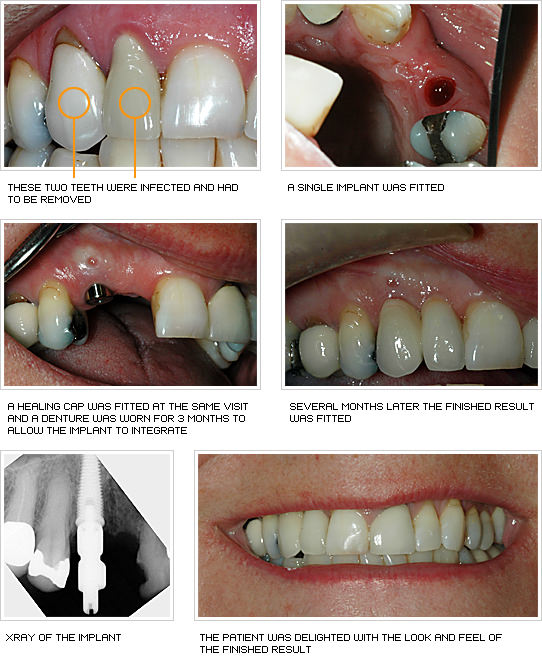The 9-Second Trick For Dental Sense
The 9-Second Trick For Dental Sense
Blog Article
Dental Sense - The Facts
Table of ContentsNot known Factual Statements About Dental Sense More About Dental Sense8 Simple Techniques For Dental SenseGetting The Dental Sense To Work
are clinical tools operatively dental implanted into the jaw to bring back an individual's capability to eat or their appearance. They offer support for man-made (fake) teeth, such as crowns, bridges, or dentures. When a tooth is lost because of injury or illness, an individual can experience issues such as rapid bone loss, faulty speech, or modifications to chewing patterns that lead to pain.Dental implant systems contain an oral implant body and dental implant joint and may also consist of a joint fixation screw. Cosmetic dentistry services. The oral implant body is operatively inserted in the jawbone in place of the tooth's root. The dental implant joint is generally affixed to the implant body by the abutment addiction screw and extends via gums right into the mouth to sustain the attached man-made teeth
(https://dentalsense1.carrd.co/)Structure of The Dental Implant System selecting dental implants, talk to your dental supplier about the possible advantages and dangers, and whether you are a candidate for the procedure. Things to take into consideration: Your general health is a crucial consider figuring out whether you are a good prospect for oral implants, the length of time it will require to recover, and exactly how long the implant might remain in place.
Smoking cigarettes may impact the recovery procedure and decrease the lasting success of the implant. The recovery procedure for the dental implant body may take a number of months or longer, throughout which time you normally have a short-term abutment in area of the tooth. the dental implant treatment: Carefully follow the dental health guidelines offered to you by your dental provider.
Examine This Report about Dental Sense
Implant failing can cause the need for one more procedure to deal with or change the implant system. Restores the capability to eat Brings back aesthetic look Assists maintain the jawbone from reducing due to bone loss Protects the wellness of the bordering bone and periodontals Assists maintain adjacent (close-by) teeth secure Boosts lifestyle Damage to bordering natural teeth during implant placement Injury to the surrounding tissues throughout surgical procedure, such as sinus opening Injury during surgical procedure (for example, fracture of bordering jawbone) Inadequate function, such as really feeling like the teeth do not attack together typically A feeling that the tooth is loosened or twisting in location arising from an abutment screw loosening up Implant body failing (looseness of the implant body) as a result of systemic infection, which might be most likely in patients with unrestrained diabetes because of neighborhood infection in bone and gum Cosmetic dentistry services tissues sustaining the dental implant body due to postponed healing, which may be most likely in patients that smoke Problem cleaning up the gum tissues around the implant, resulting in poor dental health Without treatment periodontal disease Post-surgical pins and needles because of nerve impingement or damages Always alert healthcare providers and imaging technicians that you have oral implants before any magnetic vibration imaging (MRI) or x-ray treatments.
FDA is not knowledgeable about any kind of negative events reported for MRI or x-ray procedures with dental implants. Dental implants systems are normally made from products that adhere to global consensus requirements of the International Organization for Standardization (ISO) or ASTM International. These requirements have information of what makes a risk-free product.

A dental implant is a structure that replaces a missing out on tooth. With screw-like tools, the surgeon inserts an implant right into the jawbone, and it acts as an anchor for a fabricated tooth, called a crown. A device called an abutment attaches the artificial tooth to the dental implant. The crown is tailor-made to fit the individual's mouth and match the shade of their teeth.
Not known Facts About Dental Sense
Some people are not eligible for oral implant surgery. It is for dental surgeons to operate on people with: acute illnessuncontrollable metabolic diseasebone or soft cells disease or infectionIf these concerns are settled, an individual can have the surgical procedure. In, oral doctors avoid running on people with: If people with any of the above go through dental implant surgery, there is a greater danger of the implant falling short.

Dental dental implant surgical procedure is an individualized procedure. It's not the same for everybody. The adhering to offers a general overview of what you can expect your dental expert, dental doctor, periodontist or prosthodontist to do: Position the dental implant operatively. Offer you time to recover. Affix the post and last crown, bridge or denture.
Next off, your cosmetic surgeon will very carefully position the oral implant right into your jaw. If your implant is near the front of your mouth, your dentist will make a short-term tooth for you to use until you heal.
Dental Sense - Questions
Your service provider can inform you what to expect in your scenario. Throughout the recovery stage, your jawbone ought to fuse to the dental implant. This procedure, called osseointegration, is crucial for stability and lasting success. This procedure can take anywhere from three to 9 months. Sometimes, it might take much longer.
As soon as your dental implant heals, your dental professional can connect the abutment (small connector blog post) and your last reconstruction (crown, bridge or denture). This typically takes concerning one hour to complete and might call for a second minor surgery. You shouldn't really feel any kind of pain throughout your dental implant procedure because your copyright will use medication to numb your gum tissues.
Report this page